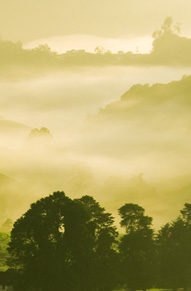
Black tea from China
Yunnan
red tea, earthy note
Keemun
mild aromatic tea, less caffeine, reminds of orchid
Lapsang Souchong
smoky aroma since the tea hangs in bamboo baskets over smouldering pine wood
Oolong tea
the tea is called Wu Long (black dragon) and bears the name due to the twisted tea leaves that look like small dragons.
Taiwan Oolong
Taiwan was called Formosa in former times. In this background, the Portuguese shaped the name to the 16th century until the Chinese name replaced it. However, the tea kept its original Portuguese name and is characterised by its fine mild aromatic quality. The taste can be compared with the flavour of a peach.
Chinese Oolong
The tea has a character of green tea and a short time of fermentation
Black tea from India
Ceylon
The tea comes from Sri Lanka. It is a fresh, pleasant tart and hearty tea with a note of lemon. When brewing the tea, the colour turns from copper red to gold red. The expert says: “The tea is golden in the cup”. The tropic-warm climate of the island with its high humidity (80-90%) is perfect for the tea to flourish. In the highlands, 90 % of the tea production is produced as broken tea. One will find good quality of Ceylon broken but less good Ceylon leaf tea.
Darjeeling
The most precious types of tea worldwide have their origin in the town of the same name in the north of India. The types are subdivided in different harvest periods and therefore they unfold various aromas. The harvest of the Darjeeling First Flush is during the first period from January till April and the taste is fresh and flowery. The Second Flush comes from the round from May till June. The orange-red brown tea offers a strong and pleasant aroma. The Darjeeling Autumnal is picked at the end of the monsoon from the end of October until the end of November and is distinguished by fine lightness. Darjeeling is the champagne among the teas. Approximately 12,000 leaves need to be harvested to gain one kilo.
Assam
It is one of the strongest types of black tea. It is full-bodied, spicy and malty.
Sikkim
The type is quite similar to Darjeeling tea but stronger, with more body, herb and flowery nuance.
Nilgri
The tea’s origin is the highland of India in the Blue Mountains and grows up on 2,000 metres altitude. The taste is fresh and it reminds of the herb aromatic Ceylon with the aroma of lemon. The English blend Early Morning Tea is produced with the tea from Nilgri.
Nepal
The fine fresh types are comparable to the Darjeeling tea. The motto of the kingdom is “small but fine”. At first, in the state gardens tea of simple quality was grown for the own needs but in the meantime private institutions such as the “Nepal Small Tea Producers Co. Ltd.“ have taken over the international marketing since the tea is of high quality. Due to climate and soil the highlands offer the young tea plants best conditions for exclusive enjoyment.
Reference: Haller-Zingerling, Cornelia. Die Welt des Tees. 2006, Umschau Buchverlag














